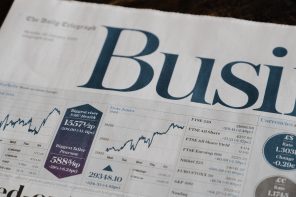Market Predictions and the Crystal Ball
In 2015, I forecast stable GDP growth in the U.S., but a difficult year for our Canadian economy; continued turmoil in the Eurozone from the unfaltering threats of deflation and austerity-driven contention with Greece and Spain; further decreases in Chinese growth; and slower but solid expansion in non-commodity producing emerging markets. I see crude oil testing new lows before grinding back up around the $70 levels, and remaining well-below $100 per barrel unless a crisis erupts in the Middle East. I forecast favorable returns for the first half of 2015 for the U.S. stock market with some volatility in the second half due to the Fed’s actions on interest rates, overvalued large-caps and broad-based subpar corporate profits. Finally, I predict Japanese and European stock markets will post surprising returns.
“Why in the world should I listen to you?”
I assume that’s most people’s immediate reaction – and it’s exact same one I would have. Very few people would invest their money solely based on a 100-word paragraph in a student magazine. But, if these exact same predictions were made by the world’s best economists from the top investment firms, hedge funds or banks, would you be more inclined to follow them?
Now is the time of the year when everyone takes out their crystal ball, fortune telling cards and star maps to predict stock market performance, macroeconomic trends and monetary policy changes. With 45,000 sets of economic data released annually by the U.S. government alone, forecasting is a gargantuan, albeit crucial, task. Economic analyses help financial institutions quantify risk and opportunities, assist governments in shaping fiscal policies, steer central banks’ monetary policy and influence investment gurus in the positions of their portfolios.
However, the sad truth is that most of the time forecasts are wrong.
Economic Jinx
Economists’ forecasting track record is far from glorious. Since 2000, stock market experts accurately predicted market direction only 48 percent of the time – which means, on average, one would have been better off doing the opposite of what was predicted. Since 1990, economists have forecasted only two of the 60 technical recessions that occurred around the world, and very few foresaw the latest three major recessions in 1990, 2001 and 2007.
Other examples of errors in economic forecasts include the OECD’s admission that its GDP growth predictions were off by an average 2.6 percent between 2007 and 2009. The organization also realized its North American forecasts were wrong 28 times in the past 30 years (see Graph). In November 2007, economists of the Philadelphia Federal Reserve predicted a 1 in 500 chance of American GDP falling by 2 percent in 2008. However, it turns out that the country’s GDP actually fell by 3.3 percent that year. And the list goes on.
Investor predictions for 2014 were also flawed. Although, the bulls were right about the American stock market, no one expected the meltdown of the BRIC countries. At the start of 2013 and 2014, everyone on the street talked about a shift out of bonds and into equities. However, the 10-year treasury yields grinded down during the year, and the German 10-year yield plummeted to a record low.
The same track record is true for equity research on stock price targets. Empirical studies, such as one published in the Journal of Business Finance & Accounting in 2011, show that price targets often have large prediction errors as large as 36 percent and consistent over-optimism for firms with positive growth outlooks.
Hindsight Is Twenty-Twenty
“Nobody has a clue. It’s hugely difficult to forecast the business cycle. Understanding an organism as complex as the economy is very hard”, admitted Jan Hatzius, the chief economist of Goldman Sachs, about economic forecasts. Prophecies are self-fulfilling, especially in the context of an economy that is always changing, and economic actors who are always adjusting their behavior to the latest news and knowledge. If a large group of economists predict today that a recession will happen next year, businesses and households will adjust their spending now, thus causing the recession to materialize instantly. Additionally, the OECD attributes its bad track record to groupthink (i.e. a lack of diverse thinking): “We all went to the same schools, we’re taught to think about economics in the same way and we’re looking at the same data.” Also, most of predictions are drawn from models based on simplified assumptions where cause and effect are often blurred. All this serves to show that biased data, bad luck, and modeling errors may decrease the accuracy of economic forecasts.
La crème de la crème
Should all research reports be blatantly disregarded? Definitely not. Not all predictions are created equal. Among the thousands of economists and investors, some have shown an outstanding accuracy in their past foresight. Every year, the prestigious Lawrence R. Klein Award, one of the best-known economic awards, is given to the individual or team with the most accurate economic forecast for a four-year period among the participants of the Blue Chip Economic Indicators survey. In 2012, Bloomberg released its own list of the top macroeconomic forecasters in the world based on economic indicator forecasts since 2010.
Some economists are almost considered prophets because of their past prognosis of major market crashes. Among others, Michael Burry predicted the subprime mortgage crisis, while the Jerome Levy Forecasting Center accurately foresaw both the 1929 crash and the 2008 recession. Finally, in 2005, Robert Shiller wrote about an imminent collapse in the U.S. housing market.
Others are known for developing uncommon, albeit accurate, prediction measures. The Beltrame Group of Scotia McLeod created the Presidential Election Cycle theory. The indicator shows that in the third year of a U.S. presidential term – with 2015 being such a year – we typically see the biggest gains in stock markets (see Graph). Since 1930, the model was wrong only once – and that was during WWII.
2015: Between Sixes and Sevens
Forecasts for 2015 either look remarkably similar to those of 2014 or predict major crashes and turmoil. The drop in oil prices, the uncertainty about the Federal Reserve’s monetary policy, the crumble of the Russian economy, the difficulties in Europe, the geopolitical tensions in Ukraine and the Middle East, and the above-average stock market returns in the past five years have created a dizzying cocktail for economists and investors.
While the media is constantly saturated by economic forecasts, one should try to be critical. It is worth doing our own homework and acquiring a sound understanding of economic theories. A strong bottom-up firm valuation knowledge, which focuses on individual company growth, rather than on macroeconomic cycles, allows investors to decrease their dependence on experts’ projections. The best strategy is to build an independent mind in order to thwart the herd mentality. Although we must remain critical of forecasts, as Henri Poincare said, “it is far better to foresee, even without certainty, than not to foresee at all.”










